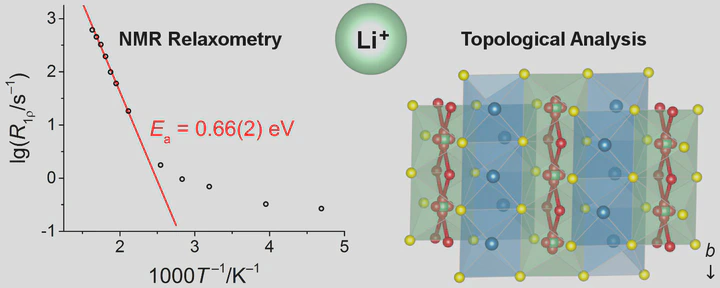LiBi₃S₅—A lithium bismuth sulfide with strong cation disorder

Abstract
Among chalcogenide semiconductors for thermoelectric applications, alkali-metal bismuth compounds occur in many complex compositions favorable for high performance. Although LiBi3S5 had been announced in 1977, the potential 1D lithium-ion conductor has hitherto eluded selective synthesis and structure determination. In this study, we present a solid-state route to phase-pure LiBi3S5 powder starting from LiBiS2 and Bi2S3. Neutron diffractograms and lithium NMR spectra reveal its crystal structure to be a cation-disordered variety of the AgBi3S5 type (synthetic pavonite; monoclinic, C2/m). Topological analyses and lithium NMR relaxometry suggest that correlated lithium-ion diffusion with activation energies up to 0.66(2) eV occurs along the channels in b direction including tetrahedral voids. Because of cation disorder, immobile bismuth(III) ions clog these pathways, making LiBi3S5 a moderate to poor ionic conductor. The synthesis route reported is nonetheless promising for new lithium bismuth sulfides with, possibly ordered, structure types of the pavonite homologous series.